




























MIDWEEK UPDATE 18 DECEMBER 2019




Dear Aero Club Member, it is the Aero Club & Member Association renewal time for the year 2020. Many thanks for your continued support for recreational aviation in South Africa. The year 2020 is a significant year being the Centenary of the Aero Club and we will take the opportunity to bring to the fore the importance that recreational aviation has for the growth of aviation in SA, particularly poignant in preserving our free flight while working with the regulator transitioning from the domain of RAASA to the CAA and the regulatory changes that it brings. We will keep you posted on the overall status & progress.
To renew your membership or join the Aero Club and its Sections, go to https://www.aeroclub.org.za/member-renewals-and-new-memberships/, where you can use the Aeropay System, or you can pay via EFT. If you have any difficulties, please contact the Aero Club office by email or phone as given below, Sandra & Charne are ready to assist.
The Aeropay System
Visit the Aero Club website on www.aeroclub.org.za
Click on Memberships and then on the Aeropay link
Log in to your membership and follow the steps
Once your payment is processed you can download or print your Membership certificate and Tax invoice.
Electronic Funds Transfer (EFT)
The Aero Club of South Africa
Standard Bank
Acc: 202506231
Branch: 001155 Midrand
Reference: Your Name and Surname
Send proof of payment to: sandra@aeroclub.org.za
The Aero Club of South Africa
Tel : 011 082 1100
Fax : 086 635 3755
E-mail : office@aeroclub.org.za

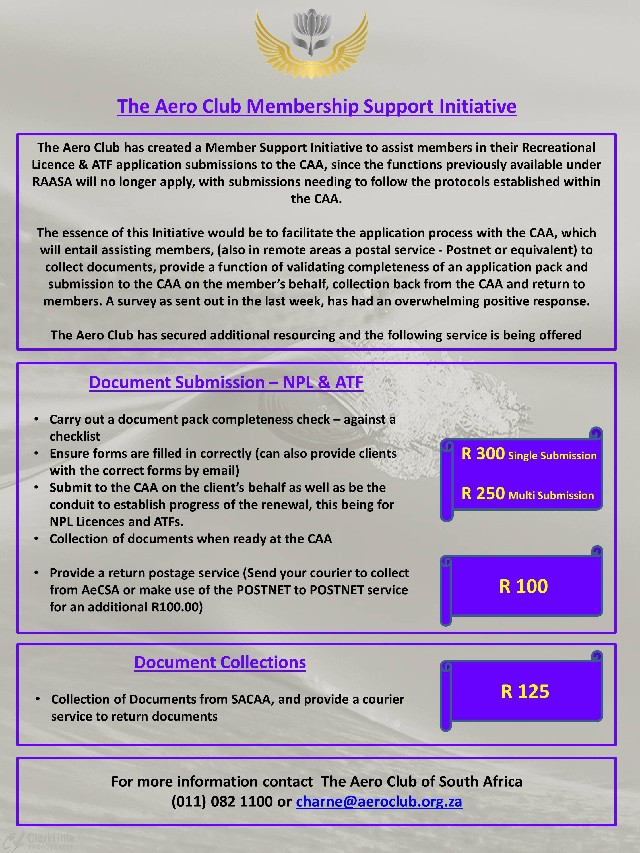





18 - 19: SAC Gauteng Regionals Vereeniging Airfield. Contact: Annie Boon chunge@mweb.co.za
25: Rand Airport Challenge Rally - Rand Airport. Contact: Frank Eckard e-mail: frank.eckard@mweb.co.za cell: 083 269 1516
25: SAPFA AGM - Time: 2 PM Rand Airport. Contact: Rob Jonkers e-mail: rob@aerosud.co.za cell: 082 804 7032


1: Witbank Speed Rally - Witbank Airfield. Contact: Jonty Esser e-mail: jonty@promptroofing.co.za cell: 082 855 9435
7 - 9: SAPFA Committee Bosberaad - Paddafontein. Contact: rob@aerosud.co.za Cell: 082 804 7032
22: FASHKOSH Stellenbosch. To be advised.
29: Rally Navigation Training Course - Venue Aerosud. Contact: Mary de Klerk e-mail: maryd@expandingbranding.co.za cell: 084 880 9000


7: Brakpan Fun Rally - Brakpan Airport - Contact: Frank Eckard e-mail: frank.eckard@mweb.co.za cell: 083 269 1516
21: Bethlehem Speed Rally - Bethlehem Airfield - Contact: Jonty Esser e-mail: jonty@promptroofing.co.za cell: 082 855 9435
21: The Airplane Factory Fly-in, Tedderfield. Contact: Shanelle 011 948 9898


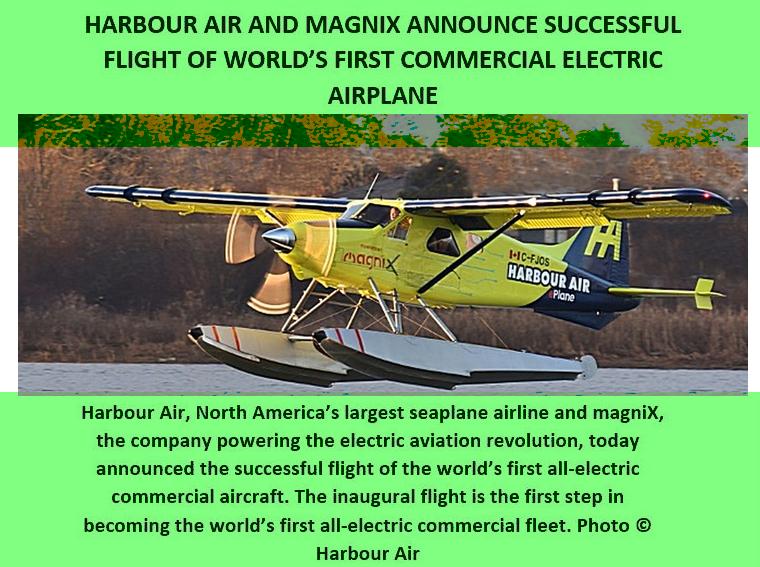
Earlier this year, Harbour Air announced its partnership with magniX and the company's intention to build the world's first completely electric commercial seaplane fleet. The magni500, which was unveiled at the Paris Air Show in June, 2019, is a high-power-density electric propulsion system that provides a clean and efficient way to power airplanes. Today that plan took flight and became a reality.
magniX and Harbour Air will now begin the certification and approval process for the propulsion system and the retrofitting of aircraft. Once the certification is complete, the rest of the fleet can be magnified with magniX's all-electric propulsion technology.


As part of its 2018-2022 Military Acquisition Law, the Burkina Faso Air Force will reinforce its military transport capabilities by joining the family of Airbus C295 operators.
The C295 is adapted to perform in the harsh sub-Saharan Africa operating environment. Together with its affordable maintenance and operational costs, the C295 is the perfect match for the climatic conditions of Burkina Faso.
Bernhard Brenner, Head of Marketing and Sales for Airbus Defence and Space, said: "We are very proud to see that with Algeria, Egypt, Ghana, Mali, Ivory Coast and now Burkina Faso, the C295 is becoming the 21st Century's standard tactical airlifter in Africa, with 36 aircraft operating in the region."

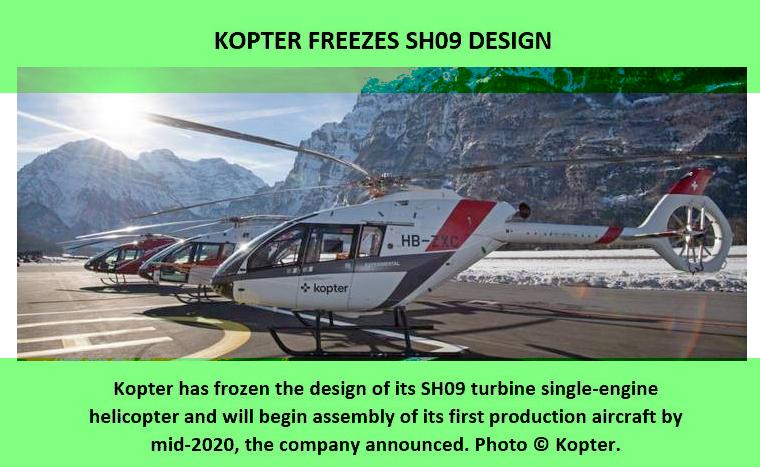
The design freeze comes one year after Kopter began accelerated flight testing of prototype P3 at its flight-test center in Pozzalla, Sicily. Kopter also said it would reveal its SH09 training simulator developed with VRM Switzerland at Heli-Expo.
Earlier this year, Kopter announced it was redesigning the SH09 to feature a larger cabin and increased MTOW. At that time, the company said the redesign allowed the helicopter to carry an additional passenger and increase its MTOW to 6,613 pounds from 6,283 pounds, due in part to a redesign of the fuel tank system. In October, Kopter revealed that it had successfully tested a new main gearbox aboard aircraft P3.
The Swiss company claims it has orders for more than 70 SH09 helicopters.

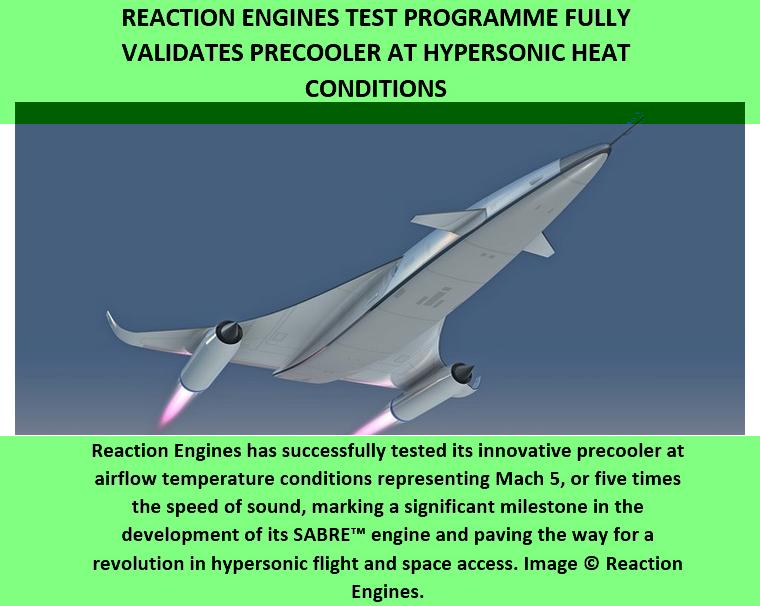
This ground-based test achieved the highest temperature objective of the Company's HTX testing programme and took place at its specially constructed unique facility at the Colorado Air and Space Port, United States.
During the latest series of tests, Reaction Engines' unique precooler successfully quenched airflow temperatures in excess of 1,000įC (~1,800įF) in less than 1/20th of a second. The tests demonstrated the precooler's ability to successfully cool airflow at speeds significantly in excess of the operational limit of any jet-engine powered aircraft in history. Mach 5 is more than twice as fast as the cruising speed of Concorde and over 50% faster than the SR-71 Blackbird aircraft - the world's fastest jet-engine powered aircraft.
This most recent test builds upon the success of previous HTX hot tests undertaken in April which saw the precooler successfully operate at temperatures of 420?C (~788?F) - matching the thermal conditions corresponding to Mach 3.3 flight.


That's because Niewald is chief engineer and senior director for Boeing's T-7A trainer, which this week was named, along with the SB>1 DEFIANT helicopter, to Popular Science's "Best of What's New" list.
Popular Science screened thousands of technologies - from companies, universities and government agencies - to determine its top 100 and describes the list as "the most pivotal, influential and just plain awesome innovations" of the year.
The T-7A is an all-new advanced pilot training system that Boeing designed for the U.S. Air Force. Using model-based engineering, the program accounted for a 75 percent increase in first-time engineering quality.
With DEFIANT, Boeing and partner Sikorsky have designed, engineered, built and are flying a revolutionary aircraft to help inform the next generation of military helicopters as part of the Department of Defence Future Vertical Lift program. Program officials say DEFIANT is unlike any production rotorcraft available today, a leap forward in technology to meet the Army's survivability requirements in a cost-effective aircraft.


That factory is better known as the Skunk Works, a renowned Lockheed Martin division that for the past 76 years has used an out-of-the-box approach to design and manufacturing that has produced the nation's most advanced airplanes.
Now that legacy continues as the company assembles the X-59 for NASA in Palmdale, California, where, for the first time since the initial machined parts were delivered in November 2018, workers can see the familiar outline of an airplane forming.
And with the recent completion in September of a major project milestone - known as the Critical Design Review, or CDR - the X-59 will rapidly accelerate its evolution from an airplane on paper toward an airplane ready to roll out of the factory and take flight.
"We're on track to meet all the key performance requirements of the airplane, including those driven by its shape, which is so essential to the mission of the X-59," Buonanno said.


"Our first CC-RAM aircraft returning to Marine Corps Air Station New River was a key program benchmark," said U.S. Marine Corps Col. Matthew Kelly, program manager, V-22 Joint Program Office (PMA-275). "We are excited to see the capability, commonality and readiness improvements these CC-RAM aircraft bring to the fleet as part of the Marine Corps' V-22 readiness program."
As a block "B" configuration, this MV-22 was originally delivered to the fleet in 2005. In 2018, the aircraft flew from Marine Corps Air Station New River to the Boeing Philadelphia facility for modernization.
"This milestone marks the beginning of an Osprey evolution," said Kristin Houston, vice president, Boeing Tiltrotor Programs and director, Bell Boeing V-22 Program. "Through a shared focus on safety and quality, the Bell Boeing team is delivering modernized MV-22 aircraft that are ready to serve our dedicated servicemen and women who rely on this essential aviation resource."
In November 2019, the U.S. Navy awarded Bell Boeing $146,039,547 to upgrade nine additional MV-22 aircraft under the CC-RAM program, with work expected to be completed in March 2022.

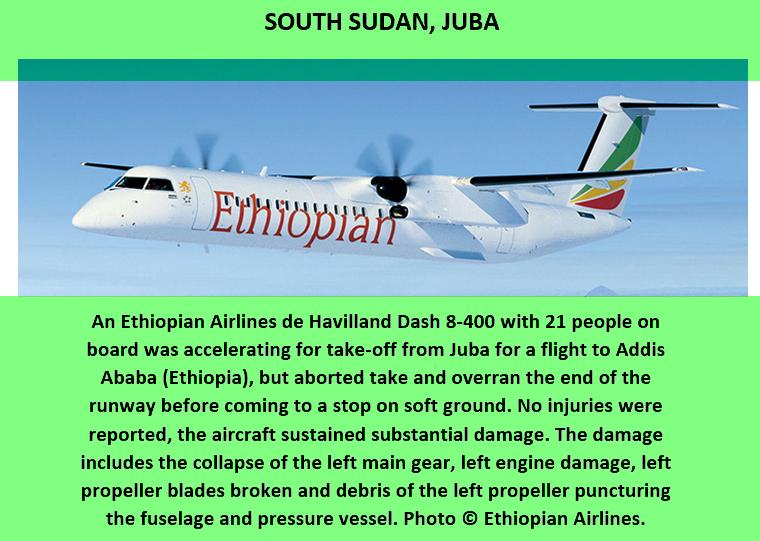
USA, Atlanta: A passenger aboard a United Airlines flight from San Francisco to Atlanta was treated upon landing after being stung by a scorpion on the plane. The flight crew consulted with a MedLink physician on the ground to provide medical guidance while still in the air, and the passenger was transported to a local hospital upon landing in Atlanta. It is unclear how the scorpion got onto the plane, which had flown in from Washington, D.C. earlier that day.
Chili, Santiago: The Chilean Air Force reported that it lost track of a C130 aircraft. The aircraft, with 17 crew members and 21 passengers on board, was en route from the southern city of Punta Arenas to the President Eduardo Frei Montalva Air Base in the Antarctica. Its mission was to carry out logistical support tasks, transferring personnel for the maintenance of the fuel supply pipeline of the base, in addition to conducting anticorrosive treatment of the national facilities in the area. Searchers using planes, ships and satellites were combing Antarctic seas hunting for the plane.
USA, Victoria Regional Airport: A Martinaire Cessna CE-208B Super Cargomaster, N4602B, enroute to George Bush Intercontinental/Houston Airport (KIAH) in Houston, Texas, has impacted terrain of Victoria County northeast of its point of departure at Victoria Regional Airport (KVCT) in Victoria, Texas. Airplane damage was not stated but reported it non-survivable. Even though a body has not been found, officials said the wreckage led them to believe the pilot didn't survive the crash.




Designed by a team led by Ralph Harmon, the model 35 Bonanza was a relatively fast, low-wing monoplane at a time. The Model 35 featured retractable landing gear, and its signature V-tail which made it both efficient and the most distinctive private aircraft in the sky.
The V-tail design gained a reputation as the "forked-tail doctor killer", due to crashes by overconfident wealthy amateur pilots, fatal accidents and inflight breakups. However, a detailed analysis by the Aircraft Owners and Pilots Association (AOPA) of accident records for common single-engine retractable-gear airplanes in the United States between 1982 and 1989 demonstrated that the Bonanza had a slightly lower accident rate than other types in the study.
In 1982, the production of the V-tail Bonanza stopped but the conventional-tail Model 33 continued in production until 1995. Still built today is the Model 36 Bonanza, a longer-bodied, straight-tail variant of the original design, introduced in 1968.

 |
 |
 Copyright © 2024 Pilot's Post PTY Ltd
The information, views and opinions by the authors contributing to Pilotís Post are not necessarily those of the editor or other writers at Pilotís Post.
Copyright © 2024 Pilot's Post PTY Ltd
The information, views and opinions by the authors contributing to Pilotís Post are not necessarily those of the editor or other writers at Pilotís Post.